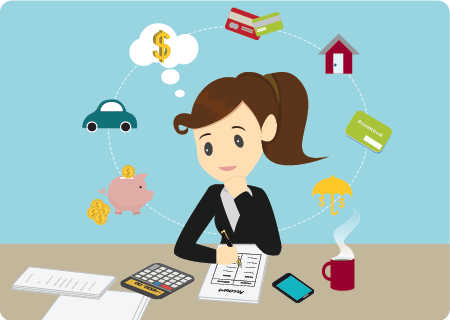
Loans are beneficial as they allow people to buy things they would not be able to. This is done by giving the person a certain amount of money that is then repaid with interest. The interest rates can vary depending on where and who is financing the loan. With loans being so important, there are various types of loans that exist in this world. Some of the more common types of loans that you would have heard of are home loans and auto loans. This is because they are the most common and required items that can be outside of people’s saved amount. These, however, are not the only types of loans that are offered; others are offered and can be useful depending on your situation. Since most loans are given by banks, they generally have an application process that you have to pass in order to be given the loan you ask for. In this article, we are going to go over some of the types of loans that are available to people.
1. Debt Consolidation Loans:
Debt consolidation is the act of merging multiple bills, usually from credit cards, into a single debt, which is then paid back using either a debt management plan or a loan. By doing so, you can reduce the interest on the debt that you will have to pay back, which can reduce the amount of burden the loan gives you. It also allows you to not have to worry about keeping track of multiple deadlines for multiple bills instead, having all of the debt essentially paid for at the same time. However, in order to get a loan for debt consolidation, you have to get approval from a bank. But if you do succeed, it will make repayment much more manageable and allow you to improve your chances of getting other loans.
2. Home Loans:
Home loans, otherwise known as mortgages, are the types of loans one uses to buy a house. This loan is one that generally is repaid over a period of 20 to 30 years. The way a mortgage works is that the bank will pay for the amount that you cannot pay for; that amount is called the principal. Over the next 20 to 30 years, you will slowly make payments that repay the principal. Then after that, your prices will go to repaying the interest that has accumulated over the years. If you default on your payments too often, then the bank can foreclose on your house. They can do this until the loan has been repaid fully. Generally, if you manage to pay a significant amount, the down payment, which is recommended to be 20 percent of the property value, initially, then the principle will reduce, which will reduce the amount that you have to pay over the next couple of years.
3. Auto Loans:
Like home loans, auto loans are tied to the property that you are paying for. In this case, if you default on a payment, then the bank can seize the car you bought using the loan as collateral. These loans are generally offered by both the banks and dealerships, and while the dealerships provide may be more convenient, they also tend to have a higher interest rate, which means that by the end of the repayment, they will end up costing more. Like for home loans, it is generally recommended that the down payment you make is about 20 percent of the value of the car that you are buying. That way, you can make the repayments on loan quickly and with a lesser burden.
Conclusion:
There are many types of loans that exist. They all are specialized for certain types of properties or payments, which means that you are limited in the kinds of loan you could get, but that also means that the loans are made to make the repayment and application for them a straightforward process. This means that loans are beneficial for people to buy things that may generally be outside their usual price range.
—
Julian Carter is a farmer of words in the field of creativity. She is an experienced independent content writer with a demonstrated history of working in the writing and editing industry. She is a multi-niche content chef who loves cooking new things.
